LED vs. Halogen Medical Examination Lights: A Comparison
Proper lighting is key in medical environments for accurate diagnoses and effective treatments. LED and Halogen lights are widely used, and both have strengths and weaknesses. The right lighting can enhance patient care and lower energy costs.
This article compares LED and Halogen medical examination lights and outlines their differences to help you select the best option for your practice.
Understanding Halogen and LED Lighting
Halogen lights work like regular incandescent bulbs, using a tungsten filament that heats up to produce bright light. However, they also generate a lot of heat, making surgical environments uncomfortable and affecting the quality of care.
LED (Light Emitting Diode) lights use a semiconductor to create light when electricity passes through it. They emit a cooler, whiter light, similar to natural daylight at about 4000°K. This cooler light improves visibility, is more comfortable for medical staff, and reduces heat-related risks, making LEDs safer to touch and less likely to cause fires.
Performance and Safety Considerations
Doctors and clinical technicians need lights that accurately show colours and stay cool in medical and surgical settings. Halogen lights are bright, but they can get very hot, increasing the risk of burns and discomfort for medical staff and patients. The intense heat from halogen bulbs can also cause problems during complex procedures, affecting how well certain surgical processes work and making the surgical team uncomfortable.
LED lights are better for surgical procedures. They produce less heat, reducing the risk of burns. They also provide better colour accuracy, which is important for accurate diagnosis and treatment in medical applications. LED lights create a comfortable working environment and improve focus and concentration among surgical teams, ultimately leading to better patient outcomes.
Energy Efficiency and Cost-Effectiveness
LED lighting is much more energy-efficient than halogen. LEDs use about half the electricity of halogen lights, resulting in significant cost savings for medical facilities, which is especially important due to the high operating costs associated with healthcare.
Although LED lamps typically have a higher initial purchase price than halogen bulbs, their longevity and lower maintenance costs make them a more economical choice over time. The average lifespan of an LED light can reach up to 50,000 hours, compared to approximately 2,000 hours for a halogen bulb.
Applications in Medical Procedures
Halogen lamps are commonly used in medical procedures because they provide clear, focused light without glare and are affordable. However, LED lights are becoming popular for surgery due to their energy efficiency, lower heat output, and longer lifespan. While LEDs may cost more initially, they save money in the long run on maintenance and energy. Their lower heat output makes the environment more comfortable for surgical teams and patients. Additionally, LEDs are flexible in design, allowing for adjustable lighting for different medical needs.
Environmental Impact
LED lights have a lower environmental impact than halogen lamps. They are more energy-efficient, which means they contribute less to greenhouse gas emissions. Moreover, LEDs do not contain harmful substances such as mercury, which can be found in some other lighting technologies.
Key Factors to Consider When Choosing Between LED and Halogen Medical Lights
When selecting the appropriate lighting solution for medical and surgical environments, evaluating several key factors is essential to ensure optimal performance and safety. Here are the primary considerations:
1. Heat Generation
-
Impact on Comfort: Consider how heat output affects the comfort of medical staff and patients, especially during long procedures.
-
Risk of Burns: Assess the potential for burns or discomfort due to excessive heat, particularly in sensitive areas.
2. Colour Accuracy
-
Diagnosis Precision: Evaluate how well the lighting renders colours, which is crucial for accurate diagnoses and treatment.
-
Visual Clarity: Ensure the lighting provides clear visibility without colour distortions that can impact surgical precision.
3. Energy Efficiency
-
Operational Costs: Consider the long-term energy costs of both lighting types, as LED lights consume significantly less electricity than halogen lights.
-
Sustainability: Factor in the environmental impact and how energy-efficient lighting contributes to the facility's sustainability goals.
4. Lifespan and Maintenance Needs
-
Replacement Frequency: Assess how often lights need to be replaced, as halogen bulbs have shorter lifespans than LEDs.
-
Maintenance Costs: Consider the labour and costs associated with replacing bulbs, which can increase with halogen lighting over time.
5. Initial Investment vs. Long-Term Savings
-
Budget Considerations: Weigh the higher initial cost of LED lights against their long-term savings in energy and maintenance.
-
Return on Investment: Evaluate the potential return on investment based on energy savings and reduced replacement frequency.
6. Light Intensity and Focus
-
Task-Specific Lighting: Determine the required brightness for various medical procedures and whether the lighting can be adjusted for different tasks.
-
Focus Quality: Assess whether the lighting provides sharp, focused illumination without glare or shadows.
7. Design Flexibility
-
Adaptability: Consider whether the lighting system can be adjusted for different medical environments and procedures, enhancing usability and effectiveness.
-
Integration with Existing Systems: Evaluate how easily new lighting solutions can be integrated into medical facilities without significant modifications.
8. Regulatory Compliance
-
Standards and Guidelines: Ensure that the chosen lighting meets industry regulations and standards for medical lighting, which may vary by region or facility type.
-
Safety Protocols: Consider how well the lighting solution adheres to safety protocols established for medical environments.
Conclusion
Choosing the right lighting for medical environments is essential for providing quality patient care and ensuring accurate diagnoses and treatments. While both LED and halogen lights have advantages and disadvantages, LEDs are generally preferable due to their energy efficiency, lower heat output, and better colour accuracy. These benefits contribute to a safer and more comfortable environment for staff and patients while saving money in the long run.
When deciding between LED and halogen lights, consider key factors such as heat generation, colour accuracy, energy efficiency, lifespan, initial costs, brightness, design flexibility, and regulatory compliance. By making an informed choice based on these factors, you can select the best lighting solution for your practice, ultimately enhancing the care you provide to your patients.
Looking for Examination Lamps?
Get competitive quotes from trusted suppliers today! Ensure your practice has the best lighting for accurate patient assessments. Get examination lights today!
FAQ:
-
What are the main differences between LED and halogen medical lights?
LED lights are energy-efficient, produce less heat, and offer better colour accuracy, while halogen lights are bright but generate more heat and have a shorter lifespan.
-
Why is colour accuracy important in medical lighting?
Accurate colour representation is crucial for precise diagnoses and treatments, as it helps medical professionals see true tissue colours and make informed decisions.

.jpg)




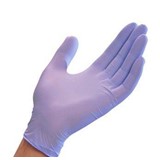


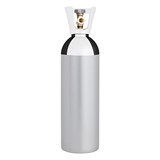


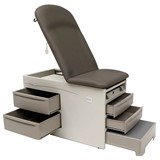
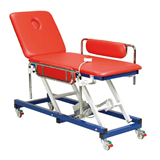
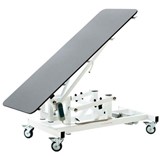

-205x205.jpg)